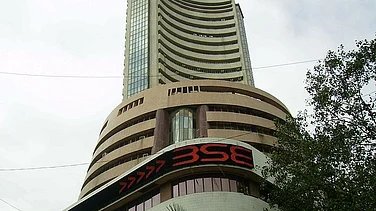With economies around the world waiting for the US Federal Reserve (Fed) to slash interest rates on the back of weak employment numbers, debt market dealers are watching closely. The Reserve Bank of India (RBI) is also expected to slash its repo rate, although by a modest margin, after the Fed’s rate cuts anticipated in September.
It is in this backdrop that Outlook Business sat down with Marzban Irani, chief investment officer-debt, LIC Mutual Fund to talk about the impact of the Fed rate cuts when they happen and the general state of the debt market.
Edited excerpts:
With the US Fed expected to cut rates in September, what is your outlook on interest rates and the state of fixed income instruments?
For the domestic market, we do not anticipate any significant rate cuts in the near term. Given the current growth rate of 6–7 per cent in India, there is no strong incentive for RBI to lower interest rates. Even if there is a slowdown, the rate cuts are expected to be modest.
The current decline in yields, however, is due to an increased demand for government securities and corporate bonds.
The growth of insurance companies and pension funds, such as our own LIC pension fund which exceeds Rs 3 lakh crore, has significantly boosted demand. Additionally, global investors like JP Morgan are purchasing substantial amounts from Indian securities which helps lower yields.
Short-term yields between one and three years remain relatively high because of demand for deposits from banks amid lower deposit growth compared to credit growth. In contrast, long term yields between 10 and 40 years have decreased due to demand for government securities.
Debt funds make up for 30 per cent of assets under management (AUM) of the mutual fund industry. Do you expect this share to rise?
Before March 2023, when the indexation benefit was removed, debt funds were experiencing significant growth. Since then, however, growth has not been substantial. Most investment now flows into short-term funds. Previously, indexation played a crucial role in attracting money into debt schemes as it made them competitive with fixed deposits.
The debt market, compared to the equity market, remains relatively nascent and is less mature. Personally, I believe it was somewhat premature to remove the indexation benefit. Debt funds will continue to grow as they offer stability. However, continued indexation could have supported its growth and mutual fund participation in duration funds could have been more significant.
The government is trying to ease retail investors into the bond market—what is your take?
From Sebi’s (Securities and Exchange Board of India) perspective, they have implemented measures such as reducing the face value of securities to encourage retail investor participation. The RBI has also enabled retail investors to participate in g-sec [government securities] markets. However, it is important to understand that the fixed income market operates differently from equity markets. Participants need to be aware of when to enter and exit as timing is crucial.
Over the past 20 years I have observed a decline in peak g-sec yields from 9 per cent to 8.5 per cent to 8 per cent to 7.5 per cent. It has recently stabilised at around 7.6 per cent. While bond platforms have made it easier to access bonds through mobile applications they also come with challenges.
One significant challenge is wide bid-ask spreads which can make it difficult to exit investments. If liquidity—the ability to enter and exit investments—does not improve benefits [of bonds] may be limited.
How do you see Sebi’s proposal to introduce a liquidity window facility for investors in debt securities?
Sebi has introduced measures such as CDMDF [Core Debt Market Development Fund] to provide liquidity against certain securities during a crisis. However, this is still in its early stages and represents only a small portion of overall holdings. These steps are positive, but liquidity remains a challenge in the fixed income market.



























